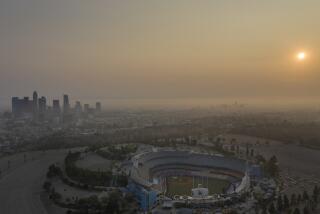Ragweed sufferers suffer longer everywhere, especially in these cities
- Share via
The sneezing, eye-watering, itchy-throated misery that comes with allergies is on the rise, led by a growing numbers of Americans sensitive to ragweed and mold. And in certain big cities -- Phoenix, Las Vegas and the Riverside-San Bernardino area among them -- the misery of ragweed allergies has lots more company than in others, says a new national study.
The study, to be released by Quest Diagnostics Health Trends, identifies the U.S. cities where allergies to ragweed and mold are most common, based on test results for allergens nationwide. Those sensitive to mold were most plentiful in Dallas, Riverside-San Bernardino, Phoenix, Los Angeles and Chicago.
The study found that sensitization to ragweed and mold increased 15% and 12%, respectively, over the study’s four years. That’s consistent with recent research suggesting that rising carbon dioxide levels in the atmosphere are causing a dramatic increase in the release of ragweed pollen, while rising temperatures promote an increase in birch tree pollen, a major allergen in Europe.
To make matters worse, the study suggests that environmental allergy sufferers -- now almost 1 in 5 Americans -- have a longer season of suffering, another apparent result of climate change.
An increase in mold allergies, which the Quest researchers also hypothesized are linked to climate change, is particularly worrisome, the study notes: Mold allergies exacerbate asthma and are a key trigger of allergic sensitization.
Overall, the regions of the country most affected by ragweed allergies were the Southwest, Great Lakes states, mountain states and the Plains. Allergy rates were lowest in the Southeast and Northwest.







